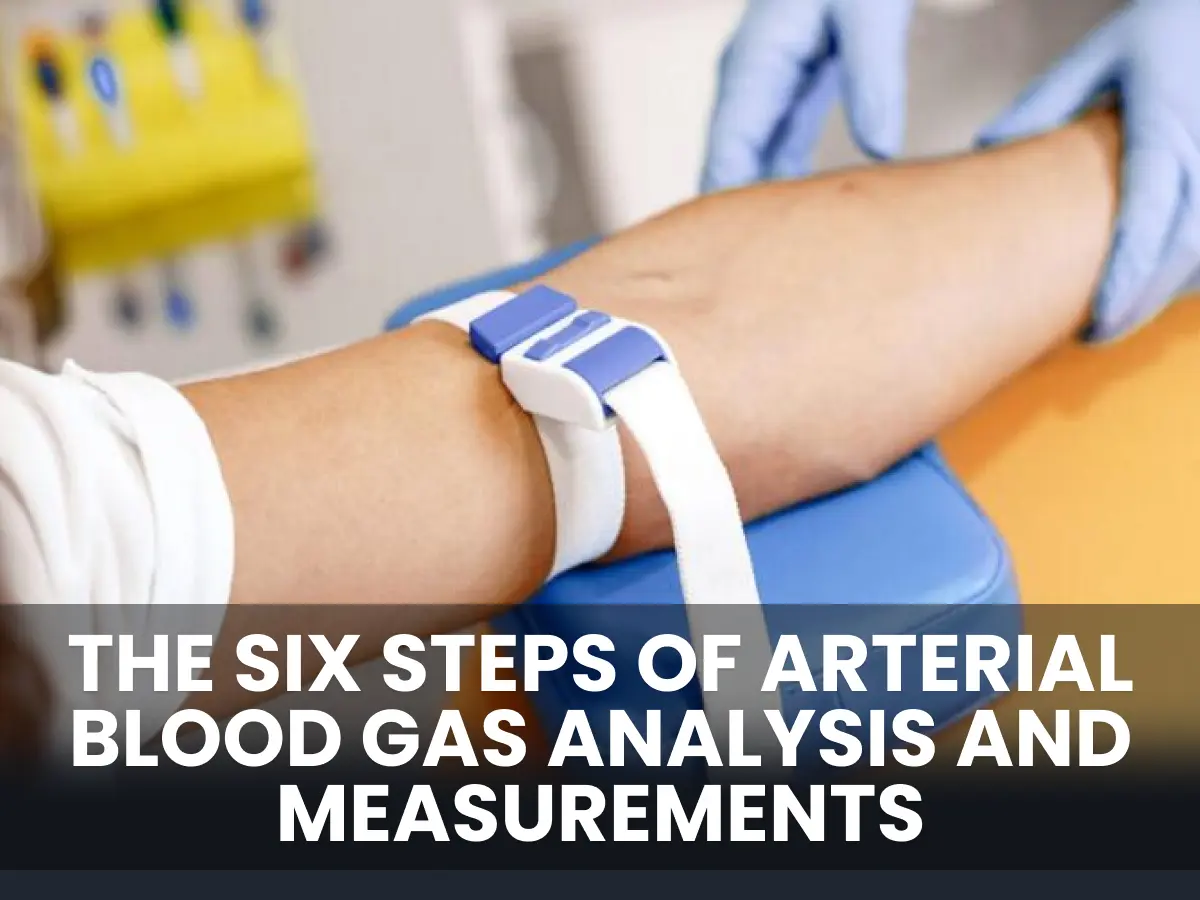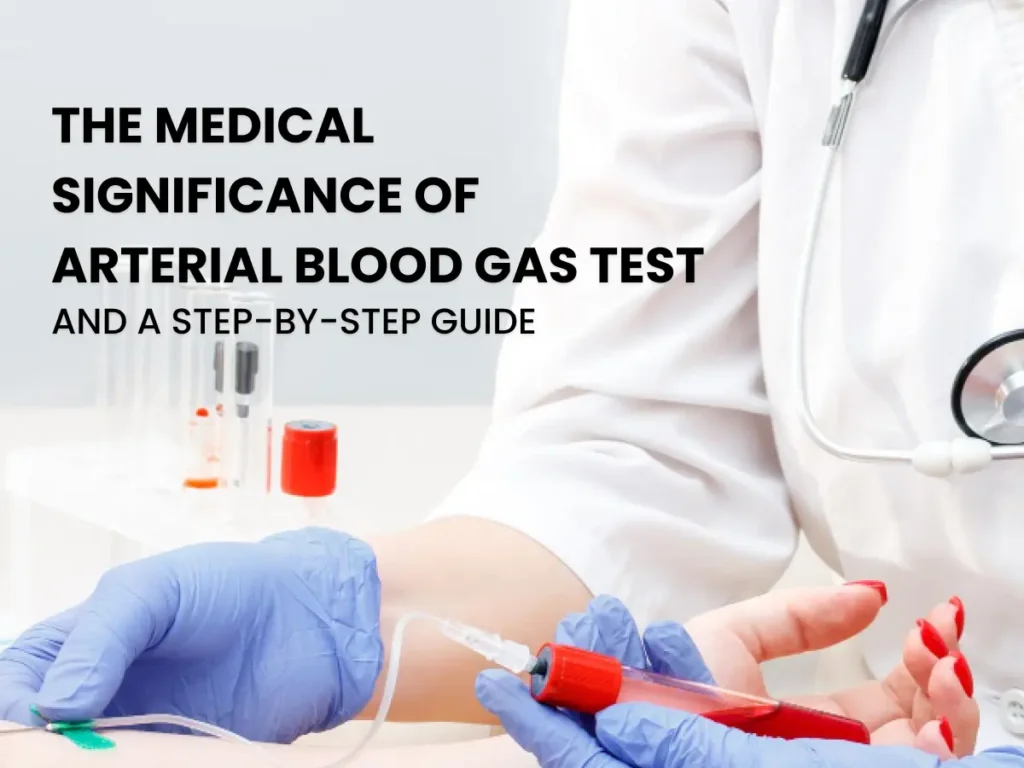A general test of metabolism and gas in the body called the ABG test, detects the oxygen and carbon dioxide levels in the blood. The arterial blood gas test examines respiratory disorders and provides information about acidic conditions or poisoning in the stomach. It serves as an overall assessment for patients suffering from various types of disorders in the body. In the test process, a sample of blood is taken from an artery or vein to diagnose the health of individuals.
A normal person has a blood oxygen level of 75 to 100 mmHg. However, if the oxygen level falls below this range, it can damage the heart or brain, and the person may fall prey to hypoxemia.
This is a general examination of the overall performance of the kidneys, lungs, and the amount of gases in the body, and it helps to monitor the condition of diseases as well as manage treatment for those diseases. The test indicates:
- Blood PH
- Oxygenation
- Adequacy of ventilation
- Respiratory failure
- Cardiac issues
- Cause of severe illness
This test process manages many kinds of medical conditions.
Who needs the ABG test and performs this test?
There are many chronic diseases that individuals may not fully understand, leading them to suspect a severe illness. Doctors recommend this test for respiratory issues, acid imbalances in the body, and other disorders that disrupt metabolism. The ABG test is usually performed in the intensive care unit (ICU) to monitor patients’ respiratory condition, uncontrolled diabetes, or the effects of drug overdose in an individual’s body. Some symptoms that need arterial blood gas test are here:
- Asthma
- Pneumonia
- COPD
- Cystic fibrosis
- Heart diseases
Your healthcare provider in Lebanon suggests a respiratory therapist who performs this test for you. The therapist draws blood from your wrist or arm and, after taking the sample, quickly sends it to the lab where the lab scientists examine the blood with a process.
The six steps of Arterial Blood Gas Analysis and measurements

In other blood sampling methods, the process is not painful; however, the ABG test is painful because blood is drawn from the arteries, which have high oxygen levels. The test measurements provide an in-depth analysis of severe medical conditions in patients. The test evaluates the health of the lungs as well as the metabolic status of the patients. Here is the 6 steps analysis of the ABG test in lebanon:
Oxygen content and partial pressure of oxygen( Pa02)
This test measures the total oxygen level in the blood and indicates how much oxygen is dissolved in it. It analyzes how effectively oxygen is transferred from the lungs to the bloodstream and describes how oxygen moves from the lungs to other systems. The normal range of blood oxygen is 95% to 100%, but this can vary based on age and altitude.
Partial pressure of carbon dioxide ( PaC02)
Oxygen content is higher in the human body, while carbon dioxide content is low. The ABG measures the total amount of carbon dioxide in the body, which ranges from 35 to 45 mmHg. A proper raising of carbon dioxide is necessary, as the test indicates how well the lungs are expelling this gas from the human body.
pH Balance
This section of the test discusses the acidity and alkalinity of the blood. Essentially, it indicates the measurement of acidic balance and bases in the blood. The ideal pH level ranges from 7.35 to 7.45. If it drops below this range, it leads to severe acidity, and if it rises above, it becomes alkaline. Therefore, it should be balanced in the blood.
Oxygen saturation (sat02)
Hemoglobin, or HB, is an important component of the blood. The interpretations of ABGs indicate the level of hemoglobin in the blood, which carries protein and supplies blood from the lungs to the whole body.
Bicarbonate (HC03)
HCO3 is a chemical that maintains the body’s pH balance. The normal range of bicarbonate is 22 to 26 mEq/L, and it depends on both the pH and paCO2 values to determine the basic compound level.
Base excess/deficit(BE)
BE indicates the surplus or deficiency of buffer bases in the blood and reflects the acid-base balance in metabolism. It typically ranges from -2 to +2 mEq/L.
Before and after interpretations of ABG tests: Risks
The process of ABG testing can be critical because it is associated with further tests. One is called the blood circulation test, known as the Allen test, and it is performed before the main test. In this process, the patient’s hand is tightly held in a clenched fist, and then the respiratory therapist applies pressure on your wrist for some seconds to see if your arteries are functioning properly or not.
If someone is on supplementary oxygen therapy, it will be about 20 minutes before the test to examine the patient’s condition, which is called the room air test. If the patient cannot breathe without the supplemental oxygen, the therapist cancels the test.
The blood sample is usually taken from the radial artery due to its high oxygen levels, and the patient may face some risks during the testing process. The arteries can differ in size from one person to another and are present on both sides of the body. The risks associated with the test are rare, but patients may experience the following:
- More than one puncture in search of artery
- Infection due to puncture or cut
- Lightheadedness
- hematoma (blood accumulation under the skin caused by a cut)
- Excessive bleeding
Although the risks are rarely seen in hospitals, you should be aware of all the dangers before going for the test.
The Life-saving Significance of the Arterial Blood Gas Test
The arterial blood gas test is an important component of modern medicine, and it accurately and quickly assesses complex medical issues in patients. These include acid-base balance, ventilation, and, most importantly, oxygen levels in the blood. The right and timely diagnosis of these conditions not only saves patients’ lives but also improves their quality of life.
The test is useful from the emergency room to the ICU in assisting doctors by keeping them informed about the problem and also helping to make immediate and accurate decisions for treatment. This is mandatory nowadays to save the lives of critical patients.
Regularly monitoring your health is essential. Often, you may not feel discomfort while some diseases silently vanish from your system. Regular medical laboratory tests provide insights into your physical condition, diagnose underlying issues, and assist your healthcare provider in creating treatment plans for you. Establish a routine of medical check-ups to stay informed about your health.

